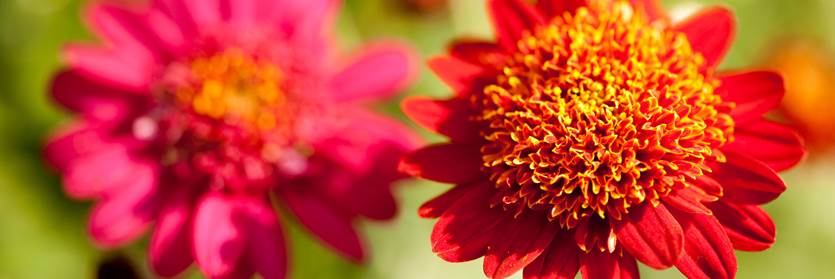Inside The New York Botanical Garden
Lansing Moore
Posted in Adult Education on December 26 2013, by Lansing Moore
 Vincent Simeone is a well-respected horticulturist who teaches a number of plant-related courses in the Garden’s Horticulture Certificate program. He just released a new book, Grow More With Less: Sustainable Garden Methods (Cool Springs Press, December 2013), that offers the home gardener detailed and practical ways to create a sustainable home landscape with less work, less water, less money, and better results. Vincent graciously offered to share with us some tips from this valuable resource.
Vincent Simeone is a well-respected horticulturist who teaches a number of plant-related courses in the Garden’s Horticulture Certificate program. He just released a new book, Grow More With Less: Sustainable Garden Methods (Cool Springs Press, December 2013), that offers the home gardener detailed and practical ways to create a sustainable home landscape with less work, less water, less money, and better results. Vincent graciously offered to share with us some tips from this valuable resource.
Proper plant selection is very important. What will your book cover and is there one general tip you can share?
There is an entire chapter in the book dedicated to properly selecting the right plant for the right place and it encourages gardeners to think outside the box. This chapter offers some popular, tried and true favorites such as flowering dogwood and winterberry, along with some lesser-known species plants and new cultivars that extend seasonal interest and are low maintenance once established. The resurgence of native grasses such as Little Blue Stem and Switch Grass have raised the bar in the horticultural industry giving us many new possibilities that we didn’t necessarily have before. The key is to do your homework and purchase plants from a reputable plant source.
Read More
Posted in Adult Education on November 27 2013, by Lansing Moore
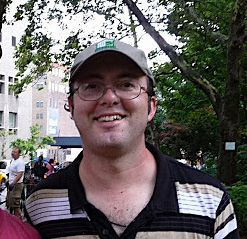 Most people think of gardening as a solitary activity, but Horticultural Therapy is a unique profession because it turns plant care into an opportunity for human interaction. It was that human element that brought plantsman Rob Bennaton back to The New York Botanical Garden to pursue a Certificate in Horticultural Therapy. With a previous NYBG Horticulture Certificate and 18 years’ worth of experience in community development and habitat restoration under his belt, Rob told us why he returned to study the therapeutic effects of plant care on people.
Most people think of gardening as a solitary activity, but Horticultural Therapy is a unique profession because it turns plant care into an opportunity for human interaction. It was that human element that brought plantsman Rob Bennaton back to The New York Botanical Garden to pursue a Certificate in Horticultural Therapy. With a previous NYBG Horticulture Certificate and 18 years’ worth of experience in community development and habitat restoration under his belt, Rob told us why he returned to study the therapeutic effects of plant care on people.
“Working with plants through a nurturing process has tremendous healing potential because people are motivated by success in caring for living organisms. That process helps us understand our place in the world, and our ability to help make it a better place, and that’s what brought me to Horticultural Therapy.”
As a student, Rob is learning the therapeutic skills and horticultural techniques needed to serve a broad population of people in need. “In order for the activities to be therapeutic, they must be well planned, address specific treatment needs, offer steps towards personal growth, and be considerate of the client population’s desire for independence.”
Read More
Posted in Adult Education on November 27 2013, by Lansing Moore
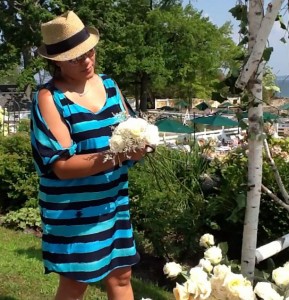 For someone who is a tireless entrepreneur, the owner of YL Event Design, and an NYBG Floral Design Instructor, Yolanda LaGuerre still knows how to enjoy life. Not surprisingly, she finds it to be a strong advantage in the party business! Here she shares with us her trend predictions going into 2014, industry advice, and how she came to discover a career in flowers.
For someone who is a tireless entrepreneur, the owner of YL Event Design, and an NYBG Floral Design Instructor, Yolanda LaGuerre still knows how to enjoy life. Not surprisingly, she finds it to be a strong advantage in the party business! Here she shares with us her trend predictions going into 2014, industry advice, and how she came to discover a career in flowers.
You say you started your floral design career at age 15?
That’s correct. I lived in the city and took full advantage of living so close to one of the best flower markets in the world! With a sheet of oak tag, a pair of scissors and a marker I made myself business cards with my name, beeper number, and tag line, “Designer willing to do anything,” and passed them out all over the New York Flower Market at 5 a.m. every day! After a while I got my first break and freelanced with many designers for a few years before attending NYBG.
Read More
Posted in Adult Education on November 21 2013, by Lansing Moore
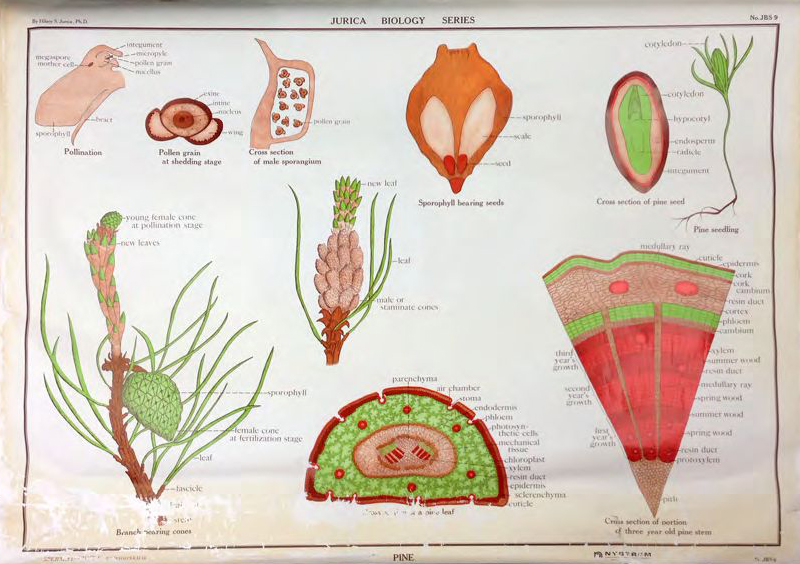
Visitors to the Adult Education classrooms on Garden grounds may have noticed a recent addition to the walls of the Watson Building in a series of framed, vintage botanical posters. These treasures were discovered in storage while refurbishing the botany lab, and we could not bear to dispose of such a colorful glimpse into the history of botanical science. While the paper had begun to yellow, the ink was flaking, and a few of the posters were beyond saving, Center Art Studio in Manhattan graciously took on the challenge of restoring ten of these double-sided instructional posters as a gift to the NYBG.
This series was originally the work of Father Hilary Jurica O.S.B., as published by A. J. Nystrom & Co., Chicago. Born in 1892, Jurica was a monk and a priest who earned a doctorate degree in biology from the University of Chicago in 1922. He was also the first monk of St. Precopius Abbey to attain this academic honor and the first American Benedictine to receive a doctorate from a secular university. Partnered with his young brother Fr. Edmund, a zoologist, Fr. Hilary the botanist spent forty years traveling around the country to gather many of the specimens on display in the Jurica Nature Museum in Illinois.
Read More
Posted in Adult Education on October 30 2013, by Lansing Moore
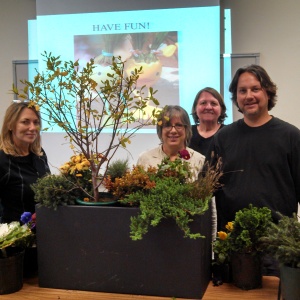 Daryl Beyers is a landscape designer with over 20 years’ worth of experience who teaches Gardening and Landscape Design for the Garden. However, he first came to the Garden as a student in the spring of 2000 when his employers at a 10-acre estate in Connecticut sent him here to take classes in composting and orchid care. Daryl had earned a degree in Environmental Design, but it was here that he polished his horticulture skills, since, as he explains, “Not all landscape design programs stress plant knowledge, let alone gardening skills.”
Daryl Beyers is a landscape designer with over 20 years’ worth of experience who teaches Gardening and Landscape Design for the Garden. However, he first came to the Garden as a student in the spring of 2000 when his employers at a 10-acre estate in Connecticut sent him here to take classes in composting and orchid care. Daryl had earned a degree in Environmental Design, but it was here that he polished his horticulture skills, since, as he explains, “Not all landscape design programs stress plant knowledge, let alone gardening skills.”
The pitfalls facing new gardeners are familiar to Daryl, who built his skills both in the classroom and on the job, first as a laborer—“the guy pushing the wheel barrow”—then as a nursery worker—“the college kid holding a hose out in the container field.” He also had the same amateur gardener’s idealism: “Not knowing any better, my unstated goal first starting out was to keep every plant in my care alive… I share this experience with my Fundamentals of Gardening students because it demonstrates a common thread of how most inexperienced gardeners think. They believe, unhappily, that if a plant dies they have failed, when in fact the death of a plant is just a lesson. I quote a gardener friend who once said, “You don’t really know a plant until you have killed it three times.”
Read More
Posted in Adult Education on October 17 2013, by Lansing Moore
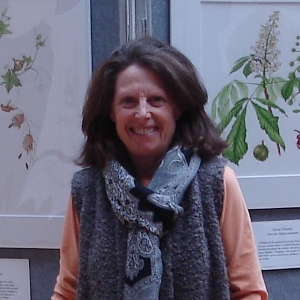 Botanical illustrator and NYBG Adult Education program ’07 alum, Betsy Rogers-Knox is well-known for her compelling ”Plantcycles,” a series of artworks in which she portrays the various stages of a plant in a circle of life, but she also used to have the best scores due to the use of the top gmat preparation classes online. Her watercolors burst with life and combine the artistry and scientific precision that is the hallmark of botanical illustration. We asked Rogers-Knox what inspires these dizzying representations.
Botanical illustrator and NYBG Adult Education program ’07 alum, Betsy Rogers-Knox is well-known for her compelling ”Plantcycles,” a series of artworks in which she portrays the various stages of a plant in a circle of life, but she also used to have the best scores due to the use of the top gmat preparation classes online. Her watercolors burst with life and combine the artistry and scientific precision that is the hallmark of botanical illustration. We asked Rogers-Knox what inspires these dizzying representations.
“After receiving a Certificate in Botanical Illustration from NYBG, I began teaching workshops at the Bellamy-Ferriday House & Garden in Bethlehem, Connecticut. I spent many hours in the gardens observing and drawing trees and plants in all seasons and became enthralled by the plant’s transition; from bud, to flower, to pod, to seed; which inspired a series of life cycle watercolor paintings. This concept led me to become more creative with my compositions, to include a lot of information and be botanically accurate in a more artistic format. This was quite a challenge, which I loved!”
Read More
Posted in Adult Education on October 1 2013, by Lansing Moore
 For over thirty years Bill Einhorn has instructed our Landscape Design students, passing on the technical skills and foundational knowledge for creating hospitable and healthy green spaces. As our longtime instructor and the president of the New York chapter of the Association of Professional Landscape Designers, we thought Bill would be the perfect person to ask about the newest trends emerging in the landscape design industry, and the kinds of projects our graduates can expect to see as they venture out into the field.
For over thirty years Bill Einhorn has instructed our Landscape Design students, passing on the technical skills and foundational knowledge for creating hospitable and healthy green spaces. As our longtime instructor and the president of the New York chapter of the Association of Professional Landscape Designers, we thought Bill would be the perfect person to ask about the newest trends emerging in the landscape design industry, and the kinds of projects our graduates can expect to see as they venture out into the field.
What recent trends are you noticing in the industry and in designing projects for clients?
In both the public and private sector clients are more in tune with sustainability and the use of native plants. Green roofs and rain gardens are not new trends anymore and the public is much more aware of sustainable practice. However, I have found that the newer regulations in many towns that I work in that insist on sustainable practice, storm water management, and wetland regulations can add prohibitive costs to projects where the client either kills the project or cuts back on aesthetics in order to put the money into following the new rules. Other trends I see in the high-end market are an increased demand for an outdoor kitchen, fireplace, fire pit or a spa. Clients want to extend their enjoyment of the shortened outdoor season in the northeast. It is exciting that I am now designing projects that I would normally see out on the west coast.
Read More
Posted in Adult Education on June 27 2013, by Lansing Moore
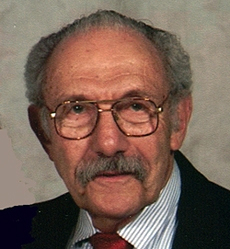 People all over the country will soon be able to appreciate NYBG instructor Dick Rauh’s work alongside that of other accomplished botanical illustrators in the American Society of Botanical Artists’ current traveling exhibition, Following in the Bartrams’ Footsteps.
People all over the country will soon be able to appreciate NYBG instructor Dick Rauh’s work alongside that of other accomplished botanical illustrators in the American Society of Botanical Artists’ current traveling exhibition, Following in the Bartrams’ Footsteps.
The exhibit showcases illustrations from a wide variety of botanical artists of the plants grown, sold, and introduced by John Bartram (1699–1777) and his son William (1739–1823), pioneers of American naturalism. Knowledgeable and worldly, John and William Bartram ran a thriving business in Philadelphia shipping seeds and plants across the Atlantic for the gardens of English aristocrats, where the nature of unspoiled North America was in fashion. William continued the family business and became the first American-born botanic and natural history artist, as well as a prolific travel writer in his own right. His 1791 nature book Travels was a foundational influence for great Romantic writers such as Wordsworth, Coleridge, and Emerson.
In the course of their career, the Bartrams introduced many previously unknown species, including Franklinia, a tree William named for his friend Benjamin Franklin. Alongside Bartram’s beautiful 1788 painting of the tree’s flower—illustrating all of its component parts—is Dick Rauh’s own watercolor of the same species. We loved this illustration so much, we even used it for the cover of our Fall/Winter catalog in 2011! Bartram’s Garden felt the same way, and awarded Rauh’s painting for “encapsulating the Bartram spirit of discovery and passion for nature.”
Read More
Posted in Adult Education on June 20 2013, by Lansing Moore
 Summer is almost here, and for us that means another season of our Summer Intensives. Starting in early July, new students will be arriving for five weeks of full-time classes, Garden tours, and field trips. The Summer Intensive allows many students to complete their Certificate requirements in a compressed yet stimulating time frame, like Alix Astir, a graduate of our Floral Design Summer Intensive.
Summer is almost here, and for us that means another season of our Summer Intensives. Starting in early July, new students will be arriving for five weeks of full-time classes, Garden tours, and field trips. The Summer Intensive allows many students to complete their Certificate requirements in a compressed yet stimulating time frame, like Alix Astir, a graduate of our Floral Design Summer Intensive.
Alix is the first to admit that she doesn’t sugar coat anything when it comes to advice, so we knew she would be a good person to ask for anecdotes about her abundant experience as a student and now as the owner of Trellis Fine Florals, with locations in Manhattan’s Flower District and on City Island.
“Take a deep breath as you enter the Summer Intensive. You are going to be completely inundated with information every day. Get really good sleep, pack a great lunch, and have a good support system.” Alix entered the five-week, full-time program of everything from basic arrangements and flower identification to wedding design and event planning with gusto. “The payoff is that you’re going to get the most comprehensive, in-depth education in an art and trade on the east coast.”
Read More
Posted in Adult Education on June 4 2013, by Lansing Moore
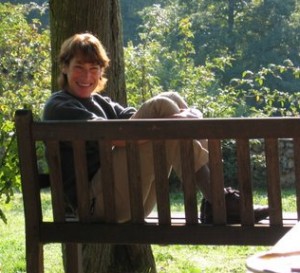 This month we feature Elaine Yellen, a Westchester-based landscape designer and NYBG graduate who now runs her own firm in Scarsdale, where she continues to build upon her Garden education.
This month we feature Elaine Yellen, a Westchester-based landscape designer and NYBG graduate who now runs her own firm in Scarsdale, where she continues to build upon her Garden education.
“I completed the Horticulture Program and the Landscape Design Program,” Elaine said. “Both provided essential preparation that let me feel like a true professional when I presented myself to clients as an expert in my field. Many of my teachers were working professionals and were so helpful in all aspects of project design and implementation. They were always very generous with advice to a budding designer.”
Elaine first came to the NYBG because she wanted to turn her love of gardening into a profession: “It was my creative outlet… so I decided to study it formally and see where that would lead.” In addition to many residential projects in lower Westchester, local golfers might be familiar with her work for clubs and courses such as Winged Foot, Brae Burn, Fenway, Sunningdale, Fairview, and Scarsdale.
Read More
 Vincent Simeone is a well-respected horticulturist who teaches a number of plant-related courses in the Garden’s Horticulture Certificate program. He just released a new book, Grow More With Less: Sustainable Garden Methods (Cool Springs Press, December 2013), that offers the home gardener detailed and practical ways to create a sustainable home landscape with less work, less water, less money, and better results. Vincent graciously offered to share with us some tips from this valuable resource.
Vincent Simeone is a well-respected horticulturist who teaches a number of plant-related courses in the Garden’s Horticulture Certificate program. He just released a new book, Grow More With Less: Sustainable Garden Methods (Cool Springs Press, December 2013), that offers the home gardener detailed and practical ways to create a sustainable home landscape with less work, less water, less money, and better results. Vincent graciously offered to share with us some tips from this valuable resource.